We are now in the middle of spring. The bushland, in October, is a blaze of every colour of the rainbow.
The Hibbertias are vibrant yellow. There are three different genera with foliage that is very distinctive for each plant.
Hibbertia fasciculata var. prostrata Bundled Guinea-flower has fine, linear leaves arranged in clusters along the stem, with terminal, showy, 5 petalled, stalkless flowers.
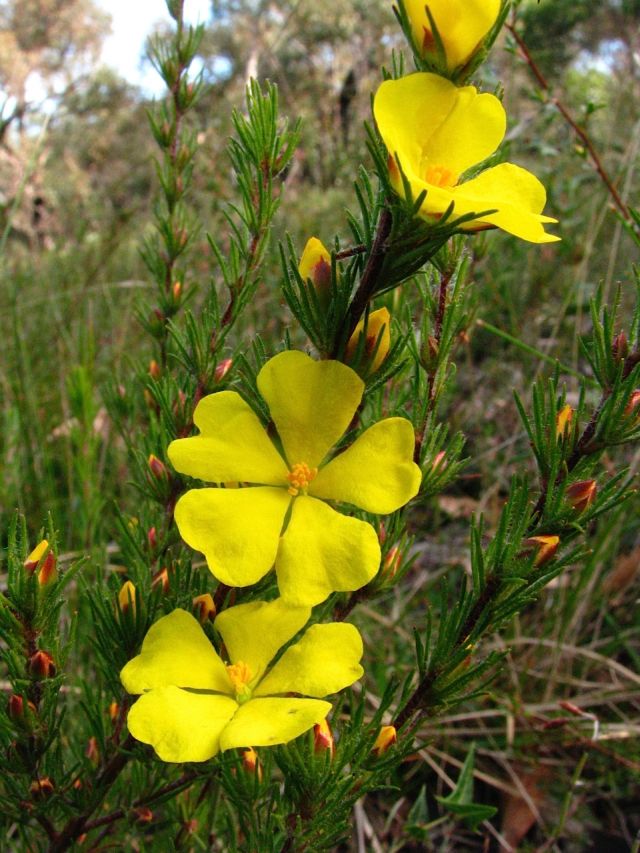
Bundled Guinea-flower
Hibbertia riparia Erect Guinea–flower, the most widespread genus in Victoria, has stiff, narrow leaves with a rough surface. It grows about 1.2 m high. The flowers are terminal, bright yellow, with five petals, stalk-less and are surrounded by leaf-like bracts.
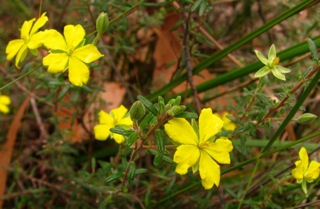
Erect Guinea-flower
The third genus is Hibbertia sericea var. sericea Silky Guinea-flower. The leaves are softly hairy on the upper surface, and woolly below. It grows from 30–70 cm high, and is an erect and gently spreading shrub. The flowers are larger than the other two, and are stalk-less, and can be solitary or in clusters.
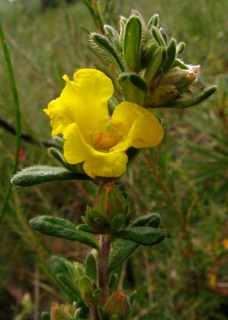
Silky Guinea-flower
Whilst walking through the bush, you may be lucky to see Pterostylis sp. aff. plumosa (Anglesea) Bearded Greenhood. It has a bird-like shape, with a long, hairy labellum. It is one of the most popular of the greenhoods. This season, many have been spotted in open areas of heathlands and woodlands. The upright, solitary flower is green with dark markings. The labellum (beard) has sparse, long golden hairs and a brownish-green knob at the apex. It grows to 35 cm tall. Look out for this special beauty.
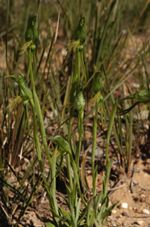
Bearded Greenhood
Found mainly in the heathland, is a small lily Chamaescilla corymbosa var. corymbosa Blue Squill or Blue Star. This is a perennial herb that flowers in spring. It has tufted, basal leaves that lie flat on the ground. Clusters of 2–10 bright, clear blue flowers with three petals, three sepals, and six yellow stamens in the centre, are on slender, branched stems. These attractive plants are common and widespread.

Blue Squill
On your rambles you may see some of the following: Blunt Everlastings – silver-grey foliage, and white, papery bracts and pale, yellow-centred flowers; bright buttercup-yellow Goodenia geniculata Bent Goodenia, a ground hugging plant; and several Parrot-peas, sometimes known as “egg and bacon” flowers.
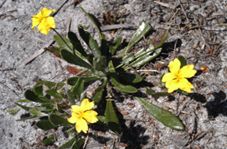
Bent Goodenia
Try to make the most of the springtime, as this is when you will see the largest variety of flowering plants. And take your copy of Flowers of Anglesea and Aireys Inlet with you, to help identify the plants you find.
Philippa Hesterman